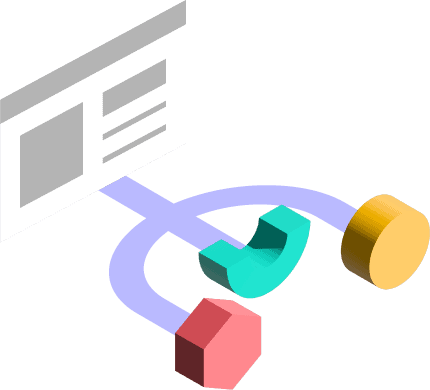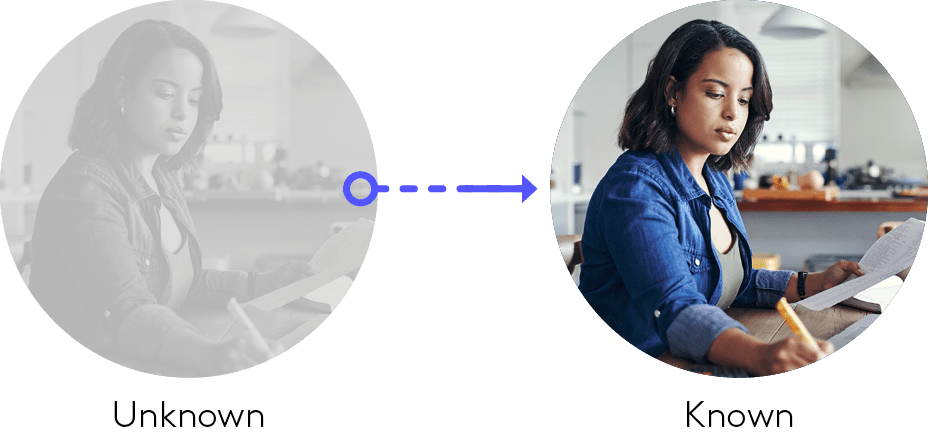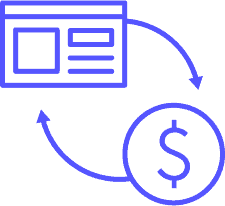How To Increase Conversion Rates For B2B Websites

According to the Content Marketing Institute, only 66% of B2B marketers prioritize their audience’s needs over their sales message when creating B2B content. All B2B marketers are a little guilty of this because you were hired for one purpose: revenue. The fastest path to revenue is helping buyers find the information they need on your website, while continuing to nurture them across other channels. The most effective way to get there is to convert them from unknown to known visitors, so you can start delivering relevant B2B content recommendations as soon as they land on your website. With more attention being paid to personalizing online experiences, taking your visitors’ specific needs into consideration is something that can’t be ignored any longer.

As a marketer, you also need to consider the ever-changing rules and best practices around things like third-party cookies and mobile experience. With the decline of third-party cookies (that allow marketers to follow visitors across the web with retargeting), it’s more important than ever to convert visitors in the first session so you can go on to engage them through first-party channels like email. The act you consider a ‘conversion’ can be anything from consuming another asset in the same session to filling out a form to scheduling a demo. The common thread is the need to keep visitors engaged long enough to build trust and earn their opt-in.
Web conversion
A website conversion happens when a user completes a desired action on your website, like scheduling a demo or filling out a contact form. Every business website is built to generate conversions, with the ultimate goal of converting an unknown visitor to a known visitor.
—

The evolution of the B2B corporate website

Hold on a second.
Do people even visit B2B websites anymore?
Yes, they do!
In fact, over 80% of B2B buyers visit a website before making a purchase. These visitors are informed and already have an idea of what they’re looking for; Google found that members of the B2B buying process conduct 12 searches prior to engaging on a specific brand’s site, on average.
Despite new channels and ‘best practices’ that are introduced each year, your website and the way your visitors engage with it is still a crucial part of your marketing strategy – and you’ve only got one chance to put your best foot(er) forward and grab their attention. The digital acceleration companies have faced over the last two years has transformed the way B2B business takes place, putting higher priority on online customer experience. Add to that an unprecedented remote workforce, now more than ever people are taking a self-serve approach to finding the information they need. This is why it’s crucial to develop a marketing strategy that puts the needs of your visitors first.
Even without an AI-powered Intelligent Content Platform you can still make some assumptions about people visiting your website. According to BrightEdge, paid and organic search are responsible for 68% of all trackable website traffic.
Let’s take a tally of what you know about your website visitor at the beginning of their journey:
-
They probably landed on your site via a search engine query.
-
They already had something in mind that they were searching for
-
They chose your website because they were convinced it’ll solve their problem or answer their question
Getting people to your site is only the start of the journey. After that there are countless obstacles that can get in the way of turning your unknown visitors into known visitors.
Do any of these sound familiar to you?
“We’re not seeing the success with our website that we used to”
“We need to provide a better, more targeted experience to our visitors”
“We need best practices on gated and ungated B2B content”
With demands from the higher-ups to fill pipelines and too many channels to choose from, marketers often feel spread thin and unable to keep track of their marketing mix. Elevating your web conversion strategy and increasing web conversion rates through content intelligence has a number of benefits that can be felt throughout the whole company:
- Customer segmentation: track B2B content consumption patterns and buyer behavior based on variables like industry, B2B funnel stage, buyer persona, and more
- Align content to trending topics or new announcements
- Convert unknown visitors to known engagers with tracking, AI, and analytics
- Eliminate the content scavenger hunt and reduce clicks-to-content
Take the real-world example of education technology company Blackboard: they used content intelligence to create a world-class website experience — including personalized B2B content recommendations for every visitor. With a global reach, and vast B2B content library spanning six regions and multiple languages, it was imperative that the most-relevant content was accessible to their visitors as quickly and easily as possible.
Blackboard saw nearly 31% of visitors exhibit binge behavior, and visitors who engaged with personalized content recommendations had 3.7X more page views and stayed on the site 8.7X longer than those who didn’t.
“This is advancing our marketing strategies and ecosystems by decades. We’re no longer delivering a static experience.”
Doug Calvelage,
Director, Global Demand and Digital Marketing
Blackboard
How To Increase Conversion Rates For B2B Websites

Whether you’re just getting started or leveling-up your current approach to optimizing web conversion rates, it’s important to acknowledge that every company is at a different stage in their strategy. In the section below, learn about the three maturity stages and their accompanying tactics so that you can find out where your company fits in.
Experimental: —
“We’re doing a few things to help improve our web conversion rates, but we have a lot of work ahead of us to find out what works best.”
-
My company has gathered basic site tracking data and identified metrics of measurement. We know to move to the next level we’ll have to give our website a facelift.
-
Many of our visitors are ‘unknowns’. The only information we know about our audience is what they provide to us via forms on landing pages.
-
We have few or no insights about our website audience. We use general personas that apply to large groups of people or accounts.
If this sounds like you, try:
- Empowering your audience to self-serve on your website’s B2B content. Link to other pieces of content or resources on your website to encourage bingeing and content discoverability.
- Create curated product or solution pages that align to how your buyers buy. If you sell to various industries or personas, create web pages with relevant B2B content for each of those cohorts.
- Explore third-party tools meant to optimize the use of your existing content assets and understand content engagement across channels.
- Run a web page content audit to identify your best content, gaps, and content redundancy.
Operational —
“We’re using a few third-party tools to help us understand how and why our customers convert, but we’re still missing a few things.”
-
We have a list of target accounts, and we automatically serve up key content for them as they interact on the website. We micro-personalize the journey for individual buyers, buyer committees or accounts.
-
We track content ROI across our online channels at a basic level.
-
We’ve ungated some of our content to allow visitors to binge on assets while still capturing account and engagement metrics.
If this sounds like you, try
- Building content tracks for top tier ABM accounts to display purpose-built or relevant assets.
- Using analytics to understand the content types and assets that are your highest performers. Use these insights to inform your B2B content marketing strategy.
- Allowing your visitors to self-select content based on variables like their industry, B2B content funnel stage, buyer persona, and more.
- Measuring web page performance with engagement and time metrics, not just page views.
Amplified —
“Our web conversion strategy is a well-oiled machine and we’re harnessing the power of content and using it to create deep insights about our customers and track ROI. What’s next?”
-
AI-generated content recommendations are used to target both known and unknown visitors to our website. Content pools are well stocked and organized so content can appear as personalized as possible.
-
We auto-generate targeted content recommendations for each individual visitor or potential buying committee member.
-
We track content ROI with content attribution & engagement data for users, topics, B2B content funnel stages, accounts, and more.
If this sounds like you, try:
- Planning your yearly content strategy using a Content Intelligence dashboard to influence your company’s budget and content pillars.
- Delivering contextually-relevant content recommendations and experiences.
- Auto-elevating content that’s already effective via a recommendations engine.
- Scaling content recommendations with automation and visitor-directed features (like a Guide or Concierge.)
This feels like a lot… where do I start?

By now you should see the importance of a well-crafted website, a thoughtful content strategy and how both affect a company’s bottom line. With that said, you might be feeling a little overwhelmed (and that’s OK, too!). Let’s take a step out of the weeds and focus on four best practices to help level-up your website conversion strategy.
Use content to guide visitors through your website
As soon as your visitor has finished reading a particular piece of content (or even before), your website should automatically determine and serve-up subsequent pieces of content that are relevant to your reader to keep them engaged. For instance, instead of linking to a dead-end PDF on a new tab, try linking to a webinar or blog post that keeps the visitor in your website’s ecosystem.
Whether it’s your homepage, a blog post, or a product page, relevant content recommendations need to be everywhere so the visitors who aren’t ready to ‘take a demo’ can stay on your site longer and learn more about your product.
Here’s a real-world example: Pragmatic Institute had spent two decades creating thousands of in-depth articles, webinars, podcasts, and tools, but it was too hard for visitors to navigate. When their marketing team integrated content recommendations powered by PathFactory’s proprietary content intelligence, it suddenly became a lot easier for visitors to dive deeper through the site (and subsequently the B2B sales funnel). Pragmatic saw 3X website engagement and 2.8X more views per session within six months.
Rethink your content gating strategy
About to hide that awesome tutorial
you just wrote behind a gate or form?
Hold Up!
Think about how your audience interacts with the content on your website. Are you serving up hyper-relevant, easily-digestible content? Great! Are you holding that content hostage until they type their email address into a form? Not so great. In fact, Insiteful reported that the average form abandonment rate could be 76% or higher; that means more than three quarters of your visitors are staying unknown, which makes them harder to market to.
Companies that tie their campaign success to the number of email addresses they collect need to explore new ways of attracting and learning about unknown visitors. While there’s nothing inherently wrong with a content gating strategy, visitors want to consume content similar to how they do it in their non-work lives.
While MQL generation is important in all its forms (pun intended!), there are several other ways to leverage a content gating strategy without it feeling overly invasive. Here are a few ideas:
- Shorten your forms so they only ask for a person’s email address (not their company, title, revenue, number of employees, mother’s maiden name, and how they heard about you).
- Display forms to unknown visitors only. You already know (and should be tracking) your known visitors, so spend your energy putting together a profile for the people you haven’t identified yet.
- Try engagement-based gating, or only showing a form to your most-engaged visitors. If a visitor is engaging with your content for a meaningful amount of time, it means they’re interested in your solution. On the other hand, you could allow someone to consume a certain number of content pieces without filling out the form.
- Consider soft-gating, or using a dismissible form, so your visitors can choose if they want to provide their information before they read a piece of your content.
The goal with forms shouldn’t be what your company is getting out of them, but what your visitor is getting out of them. Give visitors a reason to opt in; something more than just the single content asset. They know you’re going to market to them after, so make it helpful!If you’re not convinced and would like to move away from forms altogether, adding a tool to your marketing tech stack that uses content intelligence might be an area to explore. This way you’re able to serve up relevant content to the right audience, analyze their consumption patterns, and generate individual-level insights that help make your first outreach email to your visitors an informed one. More on that later.
Organize your content in a user-friendly resource center
Once someone lands on your site, the baseline experience you want your audience to have is a seamless one, where they easily find the information they need. If you already have the seamless experience locked down, you’re ready to move to the next stage which is creating a steady stream of relevant content that keeps your audience engaged and on your website longer. A great way to do this is to organize all of your content in a resource center.
A resource center has myriad uses:
- It’s a standalone lead-gen tool: by allowing visitors to self-serve and learn about your products, they’ll see you as a reputable source of information, keeping you top of mind when they are ready to start having sales conversations.
- Resources allow for greater content shareability (and discoverability!): sales teams can easily share information or guides to visitors based on what problems they’re trying to solve. Even better, once they get to the Resource Center they’re met with more relevant content that talks about the exact problems they’re looking to solve.
Done correctly, Resource Centers improve your search engine rankings: By taking both user intent and keyword research into account when building your Resource Center you’ll improve the quality of the traffic coming from search engines. In addition, you can see which resources are the most-visited and use that insight to inform your content marketing strategy.
Unlock deeper insights about your company’s content
The old adage still rings true: “you can bring a customer to content, but you can’t teach them to binge it”. Okay, we made that up, but it’s still accurate. When someone comes to your website to solve a problem or learn something new, you can’t control their behavior after the fact, but you can guide their behavior.
By adopting AI-powered technology as part of your content strategy, you can start making relevant recommendations at a scale no individual marketer (or team of marketers) could achieve on their own. But it’s not just about recommending content, AI-powered content intelligence also helps with:
- Discovering what types of content resonate most with your visitors, and how you can use that information to your advantage when collecting leads for your sales team.
- Understanding your company’s content library, so you can develop at-a-glance insights about the content you already have (including length, difficulty, format, etc.) and use it to inform your content marketing strategy.
Here’s a real-world example about how Micro Focus used content intelligence to unlock deeper insights about their portfolio property TechBeacon’s content, resulting in $45M of MIO (marketing influenced opportunity) in Tech Beacon source campaigns.
Micro Focus had a word-class property sitting in its portfolio: TechBeacon. The thought leadership site offered deep, rich content from industry experts in app dev and testing, DevOps, enterprise IT and security.
TechBeacon supported Micro Focus’ range of enterprise software products as the first touch point in the consideration cycle. It relied on banners and promo links to drive visitors onto landing pages to gather contact info – except visitors were ignoring the banners and bouncing from the landing pages. With limited insights available, TechBeacon struggled to decipher the true interest and engagement levels of its visitors. At the same time, disjointed data from an old CRM tool made it impossible to accurately measure TechBeacon’s impact on the bottom line. TechBeacon already had exceptional content but needed a user experience to match, so they decided to leverage Content Intelligence in their new approach:
- The company organized content into “guides”: dedicated collections of articles built around a relevant gated asset. This new approach integrated gated assets into the user experience as an invaluable resource, rather than an interruptive nuisance.
- By implementing an Intelligent Content platform. They were able to tap into a wealth of new data about their visitors and how those visitors engaged with different content. Content intelligence helped TechBeacon identify specific performance patterns, making it easier to predict which content assets would be more likely to stimulate interest.
With automated reporting distributed weekly updates to business stakeholders (expanding organizational awareness of TechBeacon) and proof of ROI and increased executive buy-in, TechBeacon ultimately demonstrated its ability to support business objectives.
“PathFactory was a game-changer… Unlike Google Analytics data, the metrics that PathFactory provides are extremely detailed, even down to the individual visitor, which Google Analytics simply cannot do.”
Susan Salgy,
Digital Strategy Consultant,
Micro Focus
Conclusion
If reading this got your wheels spinning and you’d like to explore other ways content intelligence can help inform your content marketing strategy, we’ve got you covered. Check out the collection of guides, blog posts, and ebooks below that will help you level-up your knowledge, regardless of what stage your company is at.

Focus your marketing efforts on accounts that already show intent to purchase

Start sales outreach earlier in the buying process

Maximize the ROI from marketing campaigns

Continue to work towards stronger sales and marketing alignment
Glossary

Web conversion
A website conversion happens when a user completes a desired action on your website, like scheduling a demo or filling out a contact form. Every business website is built to generate conversions, with the ultimate goal of converting an unknown visitor to a known visitor.
—
Web promoters
Web promoters help website visitors discover related content to the selected CTA or content clicked on your site thereby increasing the content consumption behind that click. They can also provide opportunities for interested parties to indicate intent through CTAs and be customized to match the look and feel of the site in order to provide an integrated and seamless content experience.
—
Microsites
A microsite is an individual web page or a small cluster of pages which are meant to function as a discrete entity within an existing website or to complement an offline activity. The microsite’s main landing page can have its own domain name or subdomain.
—

First party cookies
First-party cookies are directly stored by the website (or domain) you visit. These cookies allow website owners to collect analytics data, remember language settings, and perform other useful functions that provide a good user experience.
—
Overlays
On a website, an overlay is a graphical content box that appears in the middle of a page, obscuring the background content. Website overlays are also commonly referred to as dialog boxes, modal windows, lightboxes, and popups. When used correctly, overlays are a powerful way to increase website conversions.
—
Third party cookies
Third-party cookies are created by domains that are not the website (or domain) that you are visiting. These are usually used for online-advertising purposes and placed on a website through a script or tag. A third-party cookie is accessible on any website that loads the third-party server’s code.
—
Digital Sprawl
Refers to an inconsistent experience across a brand’s digital properties.
—






